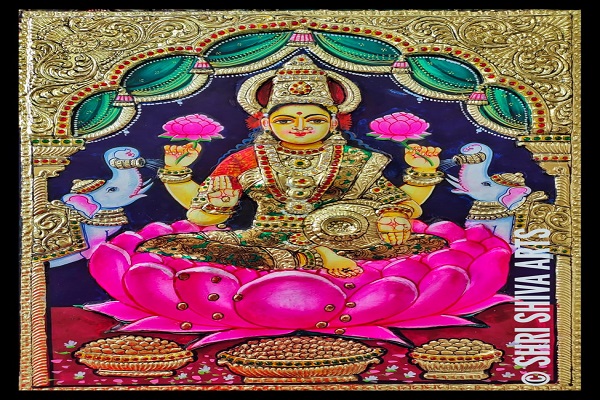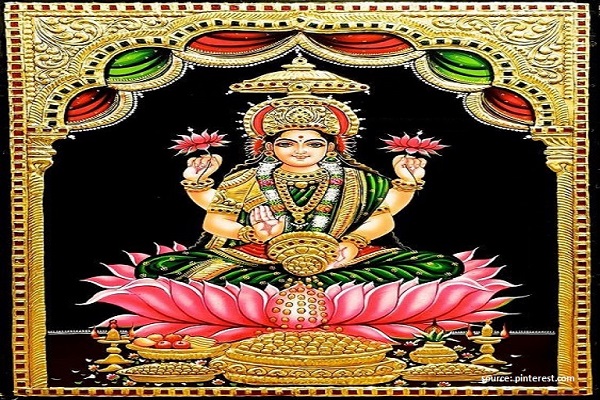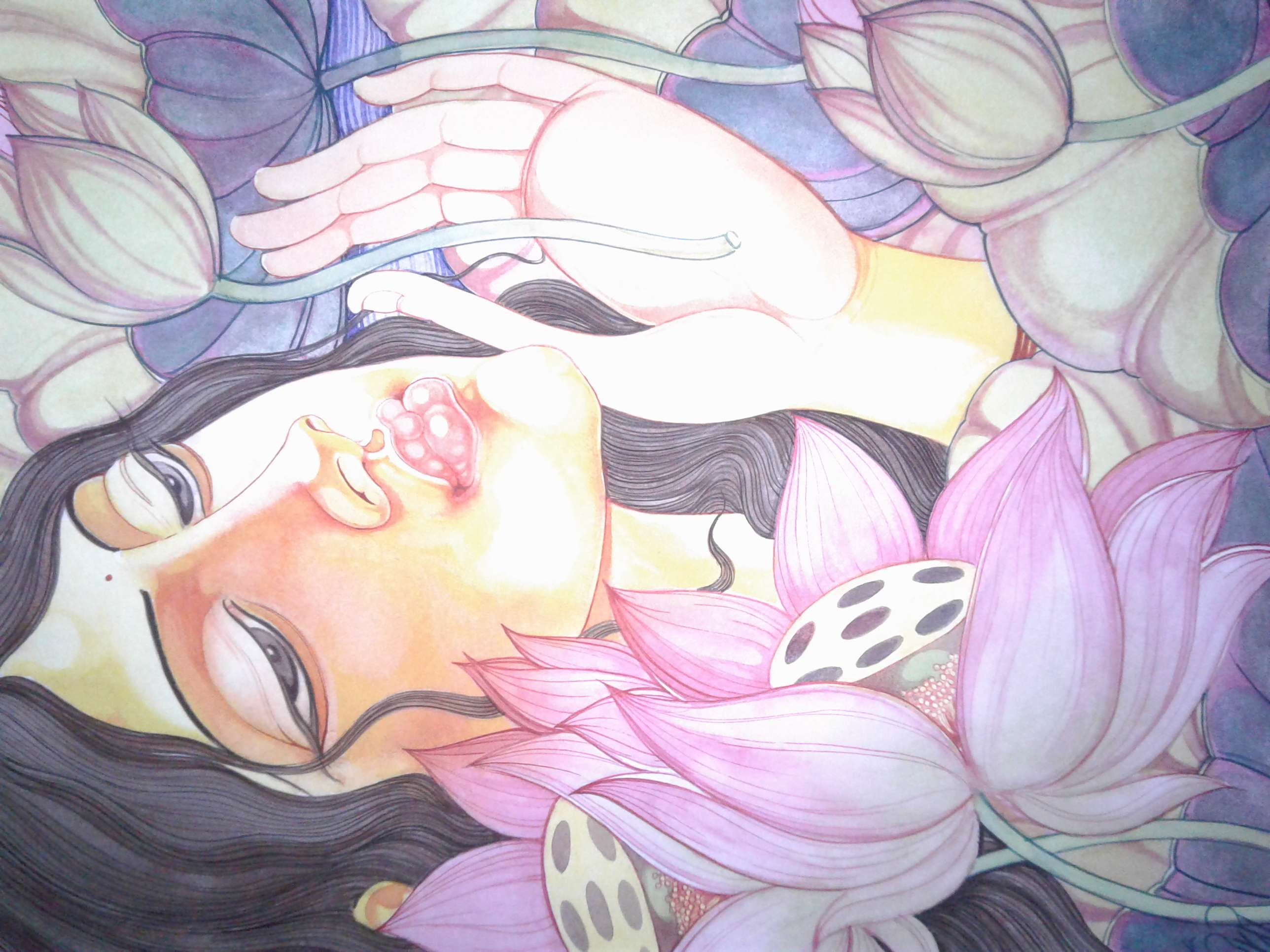
Lakshmi Tanjore Paintings: The Art Form of South India
Also known as Thanjavur painting; Lakshmi Tanjore paintings are one of the classical art forms of Indian- south India. Tanjore is a celebration of vast and rich artistic traditions. These traditions represent the region of Thanjavur in Tamil Nadu, India.
The paintings of Tanjore use vibrant colors to depict the extravagant formations of deities. They embellish the same with gaudy gold foil. The art of Tanjore paintings has undergone a memorable transformation. It has continued to be famous among lovers of art today. it also inspires various budding artists with the art and its true Indian sense.
Chola Dynasty has a rich and ancient history. Thanjavur region was ruled by them. In the 16th century, it was preserved in the vibrant sculptures and murals on the walls of Tanjore's temples.
Hence, Painting is the most well-known of Thanjavur's gems. Tanjore painting has a renowned indigenousness internationally. Tanjore Painting is known for its unique manner of 3D Generation. The Chola rulers who dominated south India in the 16th century promoted Tanjore paintings. Maratha princes, the Nayakas of the Vijayanagar empire, the Rajus of Tanjore and Tiruchirapalli, and the Naidus of Madurai patronized it.
Lakshmi Tanjore Painting: Patronage and Ancient Roots

Tanjore painting was influenced by Indian art from the 16th century when the Vijayanagara Rayas used the Nayaka Governors to rule their extensive kingdom in southern India. The Nayakas were philanthropists who supported the arts and literature.
Maratha monarchs promoted the flourishing of art and artists after establishing Maratha sovereignty in the region in 1676. Tanjore painting genuinely blossomed and grew into the shape and style that we recognize now throughout this period.
Large paintings depicting deities, as well as Maratha emperors, courtiers, and nobles, graced Maratha palaces and buildings. Nearly all of the gods had rounded faces, almond-shaped eyes, and sleek bodies. Flat colours are used to fill the figurines. Arches, curtains, and decorative borders are typically set within. To enhance depth, Tanjore paintings were known for their complex compositions.
Thanjavur, or Tanjore has many reasons to be proud of its cultural past. Tanjore, around 300 kilometers from Tamil Nadu's capital city, Chennai (formerly Madras), was the Gupta Empire's cultural capital, reaching its pinnacle in the early 18th century. The world's most notable sanctuaries and temples are a part of it.
Cholas were huge art and sculpture lovers, which is why you can't take your gaze away from the colossal temples that represent the Dravidian architectural style as soon as you land in Tamil Nadu.
Also Read More: Lakshmi Paintings for Home Décor
Thanjavur Painting's Characteristics
Tanjore Paintings etch Solid wood boards. Palagai Pandam is another name for Tanjpre Paintings. This means a picture on a wooden plant. The majority of the figurines are delicately covered with embellishments and packed with brilliant colours. This makes the ancient indigenous form of art deemed divine in its approach. As A fact, costly stones such as diamonds and rubies were used to adorn portraits. One of the most commonly used stones is Semi-precious Jaipur stones.
Along with this, the remaining area was splattered with bright colours. The plumpness in the faces of the idols, which emits the unique pure aspect in all Tanjore paintings you will come across, is one of the distinguishing features of Tanjore painting.
The painters of Tanjore employ their expertise and imagination to produce masterpieces of that art form. Tamil Nadu holds the strong roots of Tanjore Paintings. Hindu mythology inspires the Tanjore painting. Tanjore's paintings show numerous paintings of Lord Krishna as a child in various prankish attitudes. Thus, the paintings also show important mythical events like Meenakshi's marriage, Radha and Krishna's infatuated gestures, Shri Rama's coronation, and so on.
Tanjore is an ethnic art form. The painters take considerable care in creating each portrait's relief work. This gives them a unique 3D look. Private homes and Business offices use Tanjore paintings too. In the gloom of space, the extensive use of bold colours, glittering stones, and splashes of gold creates a luminous impact.
The creation of a masterpiece- Lakshmi Tanjore Painting
The creation of the canvas is the most difficult step in the process of constructing a magnum opus. The canvas is made out of muslin cloth. it is used to arrange the initial sketch. The muck paste is then made by mixing chalk or zinc oxide dust with Arabic gum and a water-soluble adhesive. On a thin muslin cloth, the fixative is applied and glued on the wooden board. However, the layout created during the initial step of the artwork creation process is gradually and methodically embellished with numerous add-ons.
Cut glass, semi-precious jewels, rich colours, and laces are commonly utilized to enhance the beauty of a Tanjore painting. 22 karat gold foils are pasted in different portions of a figure to enhance the magnificent effect of the painting. While the rest of the areas are filled with day-glow colors that match the brilliance of the painting.
However, a real Tanjore painting can last for decades without tarnishing due to the use of high-quality gold foil. A medium-sized painting will be slightly more expensive than the rest.
Wrap up:
It is seldom easy to create a work of brilliance, as Tanjore painters have demonstrated through the decades. A great degree of dedication, perseverance, and excellence is a part of Laksmi Tanjore’s paintings. Hence, the three P's come together to create such produce. An original Tanjore painting might take anything from 3 to 6 months to complete.
To summarise, Tanjore’s painting is the ultimate way for an artist to show passion, sincerity, and skill via his work. Thus, the painters of Tamil Nadu are the ones responsible for the survival of Tanjore Paintings.
Therefore, Indian Art Ideas is your very own pencil sketch gallery. You can yourself the best paintings in all forms. With Indian Art Ideas, you get a variety - from pencil sketch gallery to Lakshmi Tanjore Painting store online.
Tanjore paintings continue to be popular today. They've been heavily commercialized in recent years, and can even be found being sold in street markets. Although the art form has endured the test of time and remains popular, many art lovers are concerned about the general fall in quality. What's encouraging is that workshops and training camps are being offered to guarantee that the artform thrives while preserving all of the rich, traditional, and creative components that define Tanjore painting's identity.
Grab on in your best deals and re-decorate your home and office walls!





















